
Jennifer James urges educators to tell their own stories at the Second General Session Sunday afternoon at the ASCD Annual Conference and Exhibit Show.
Cultural anthropologist Jennifer James wants educators to tell a story, a story that embraces and reinforces their best values and passes them on to the next generation.
She explained what this involves during her presentation, "The Human Face of Technological Change," at the Second General Session Sunday.
Cognitive Dissonance "Splits the Mind"
"We are changing faster than any culture ever has in the history of the world," James said. "We have never seen change of this depth, this breadth and this intensity."
The result of this dizzying change is cognitive dissonance.
"Cognitive dissonance splits the mind and causes rage because you can't reconcile it with reality," James said.
Imagine a 15-year-old boy surging with testosterone who feels no connection to his culture and therefore experiences cognitive dissonance. That feeling can cause incidents like Columbine and other forms of violence, according to James.
"Everything You Need ... in a Weird Cartoon"
To help children cope, James recommends that educators tell compelling stories about the future. These "stories" are told in the way the storytellers live their lives and in the decisions they make.
Nelson Mandela, for example, tells a moving story of reconciliation that made a positive difference in South Africa, while Slobodan Milosevic tells a 13th century story of revenge that created a blood bath in Yugoslavia and huge loss of life, James said.
In terms of popular culture, children turn to their own storytellers-popular cartoons. The Mutant Ninja Turtles teaches the value of being fast, assertive, adaptable and confident, and it teaches higher forms of consciousness, higher forms of communication, meditation, mediation, teamwork, stress reduction and ethics.
"It's everything you need for this new world in a weird cartoon," James said. "This is a lot better than the Three Bears."
In the daily lives of educators, they too can tell a story in the face of incredible change.
"You are guiding. You are leading. You are taking a generation across a bridge from the past to the future," James said. "When you get over that bridge, we will have moved to a higher level of civilization. You make an extraordinary difference."
Read the full post . . .


 Amid presentations exploring the "promise of the future," students from Cypress Elementary School in Osceola County, Fla., shared their creative study and interpretation of the past--specifically the ancient Aztec folk tale, "How the Music Came to the World."
Amid presentations exploring the "promise of the future," students from Cypress Elementary School in Osceola County, Fla., shared their creative study and interpretation of the past--specifically the ancient Aztec folk tale, "How the Music Came to the World."
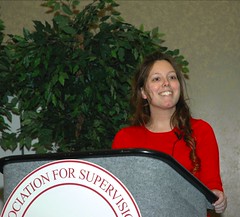
 The issues of cultural competency and diversity training have been very helpful to me. In our school district, this is an issue of concern, and we are trying to broaden our knowledge base and use what we have learned to meet the needs of our students.
The issues of cultural competency and diversity training have been very helpful to me. In our school district, this is an issue of concern, and we are trying to broaden our knowledge base and use what we have learned to meet the needs of our students. I liked the workshop on polishing our presenting skills. I learned a lot about the use of a person’s voice in presenting and how to enhance audience participation and have audience members engage with each other.
I liked the workshop on polishing our presenting skills. I learned a lot about the use of a person’s voice in presenting and how to enhance audience participation and have audience members engage with each other. Dennis Littky’s presentation was the most moving, and the Second General Session with Jennifer James was most thought-provoking. I enjoyed meeting with author Charlotte Danielson. Spending 10 minutes talking to her puts a face to the concepts presented, and the subject matter means a lot more as a result.
Dennis Littky’s presentation was the most moving, and the Second General Session with Jennifer James was most thought-provoking. I enjoyed meeting with author Charlotte Danielson. Spending 10 minutes talking to her puts a face to the concepts presented, and the subject matter means a lot more as a result.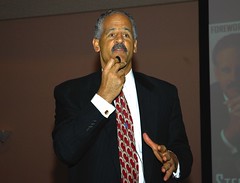

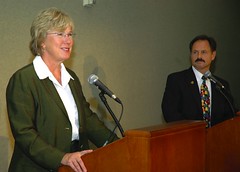
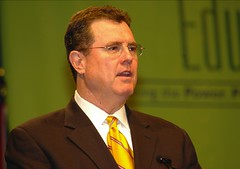
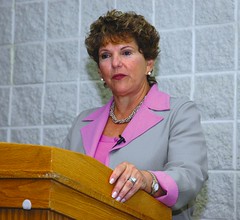

 "We teach a lot about other cultures in social studies. We teach them (students) with textbooks. We use a lot of Internet, movies and newspapers. We try for teachers to become part of the discussion, but not lead it, so it will become more interactive."
"We teach a lot about other cultures in social studies. We teach them (students) with textbooks. We use a lot of Internet, movies and newspapers. We try for teachers to become part of the discussion, but not lead it, so it will become more interactive." "We don't have a national curriculum, but we have a national statement of expectations. It includes social justice, which has tenets of multiculturalism, tolerance, diversity and inclusivity."
"We don't have a national curriculum, but we have a national statement of expectations. It includes social justice, which has tenets of multiculturalism, tolerance, diversity and inclusivity." "We are very global, so cosmopolitan and so interconnected. We have a lot of expatriates and multinational companies. In our school curriculum, it's very natural-naturally diverse. So it's easy to connect."
"We are very global, so cosmopolitan and so interconnected. We have a lot of expatriates and multinational companies. In our school curriculum, it's very natural-naturally diverse. So it's easy to connect." "A lot will come from actual cultures, because New Zealand has become very multicultural in recent times.... What we want to do is make the student feel comfortable. We really incorporate within themes, within studies, using the community. Being eclectic. Bringing in different strategies, drawing on resources."
"A lot will come from actual cultures, because New Zealand has become very multicultural in recent times.... What we want to do is make the student feel comfortable. We really incorporate within themes, within studies, using the community. Being eclectic. Bringing in different strategies, drawing on resources." "Our curriculum does include world geography. It includes human geography and culture. We do a lot of current events on different political issues in other countries."
"Our curriculum does include world geography. It includes human geography and culture. We do a lot of current events on different political issues in other countries." "We teach tolerance, understanding, respect and compassion. We celebrate diversity. We have some important days (such as when) every child wears a costume from their father's country."
"We teach tolerance, understanding, respect and compassion. We celebrate diversity. We have some important days (such as when) every child wears a costume from their father's country."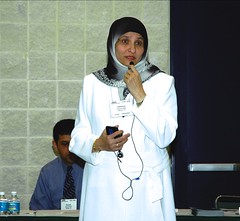


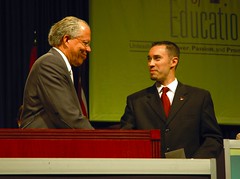 During the Opening General Session, ASCD honored Nevada Principal Pete Hall as the third recipient of the Association's
During the Opening General Session, ASCD honored Nevada Principal Pete Hall as the third recipient of the Association's 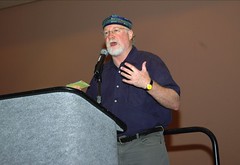 The key to Dennis Littky's talk on "
The key to Dennis Littky's talk on " There's no question about it. Students are becoming increasingly overweight, and it has reached a point where obesity is as much an educational issue as it is a public health one. So noted former U.S. Surgeon General David Satcher during Saturday's Opening General Session when he addressed "The Obesity Epidemic: What It is Costing Schools."
There's no question about it. Students are becoming increasingly overweight, and it has reached a point where obesity is as much an educational issue as it is a public health one. So noted former U.S. Surgeon General David Satcher during Saturday's Opening General Session when he addressed "The Obesity Epidemic: What It is Costing Schools."